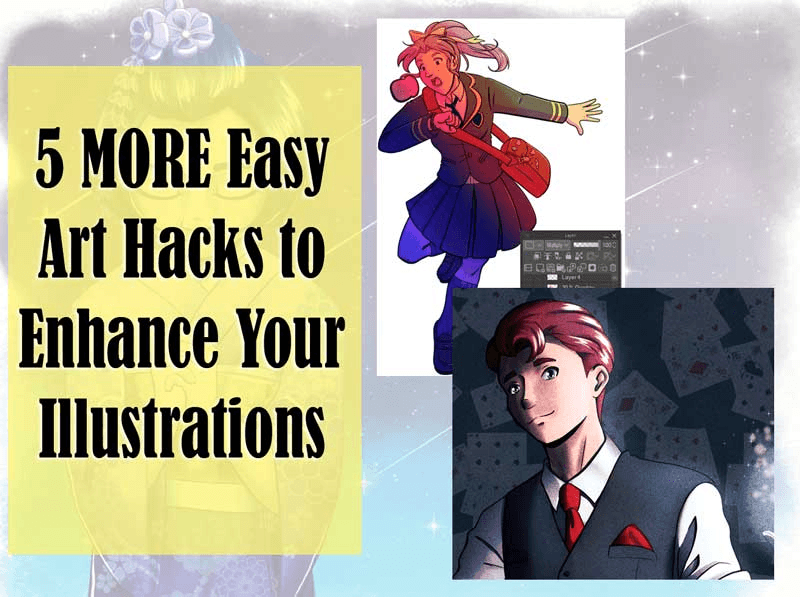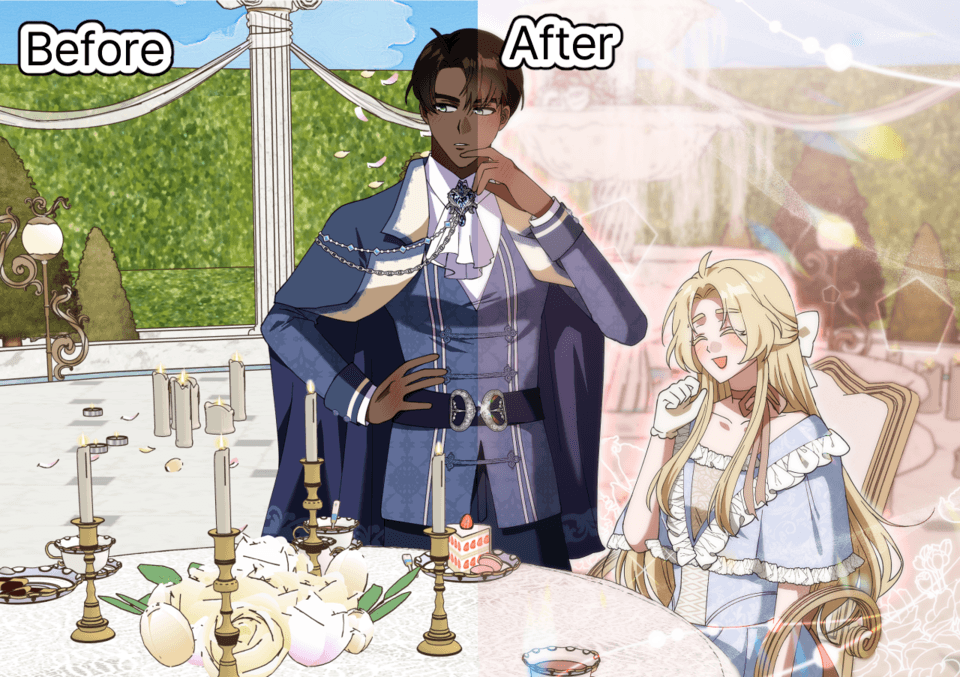GROUP COMPOSITION for COMICS
Hi there! This article is going to be a bit short but sweet because everything is expanded upon in the video, so please check it out if you can! Here are some tips and tricks I learned in drawing characters together in comics:
1. Emphasize what you want the reader to see as much as possible, as soon as possible.
With comics, the reader usually spends only a few seconds or so looking at panels at a given time, unless they’re called to look around longer. Because of this, it’s good to know what parts of your group composition should get the reader’s attention.
In this example, I wanted the casual way Bruce and Harley are dressed to be the focus. So if Bruce’s lack of business attire hasn’t clued you in, then Harley’s boots on the floor should.
2. Keep in mind where dialogue, dialogue bubbles, and SFX will be and work with them
Whether it’s traditional comics or webcomics, dialogue and sound effects will always be high priority. So keep in mind the font size established for your comic and the bubble styles, take the time to figure out the flow of the script, sketch out an approximation even. Afterwards, get the text as close to finished before proceeding to actually draw. (at least that’s what works best for me).
3. Change styles on characters if you want to cheat a bit
With panels such as these where you want to show characters in the background, but need a mid-line between establishing who they are but not getting all the attention, then changing art styles (like a chibi style) can be a quick cheat for that. And if you maintain that same principle throughout the comic, it will be less of a “cheat” and more a technique.
4. Botched perspective works, but within context
Yes, dynamic poses are a huge plus in comics, even becoming highlight material. But I like to think that if it doesn’t detract from the scene, doesn’t break the suspension of disbelief, and could make the scene look cooler overall, then a bit of botched perspective a la Leonardo da Vinci’s the Last Supper could make a piece work.
5. Use body parts as a frame
Our body parts have many shapes and angles, some of which make for great framing devices. Don’t hesitate to try and use them!
Speaking of shapes and angles;
6. Shapes to direct the eye
Opposite of tip #1, if you’d like to have your reader stay in a pal for a bit longer, you can use the shape of your characters’ body parts to guide the reader’s eye to various points of interest.
7. Use parallels and mirroring
Have characters pose in ways that mirror each other, but still vary in ways that make sense to the character’s personality.
8. Work on poses simultaneously
If characters are overlapping each other, don’t hesitate to designate a layer for each of them and work on their poses at the same time. Of course, you can also finish one character first and adjust the next characters accordingly. As long as you have a frame of reference in the beginning, it should work.
9. Use positioning as a clue to their relationship dynamics
A common technique is if one is more “superior” than the other, position them higher or closer to the foreground, while the “inferior” one is lower or near the background. Of course you can flip that instead, or better yet, trust your instinct on what your characters’ relationship should look like physically.
10. Bookend poses when possible.
Lastly, it’s a nice little touch to have characters opposite each other contrast each other’s pose, so that it comes full circle. Whether it’s with two or a dozen characters, having the first and last one bookend the entire group with contrast and/or compliment each other , it’s a good way to round off the picture.
Thank you so much for reading! If you liked this little article, please feel free to give it a like or comment, or watch the video itself. I wish you the best in your art journey <3
























Comment